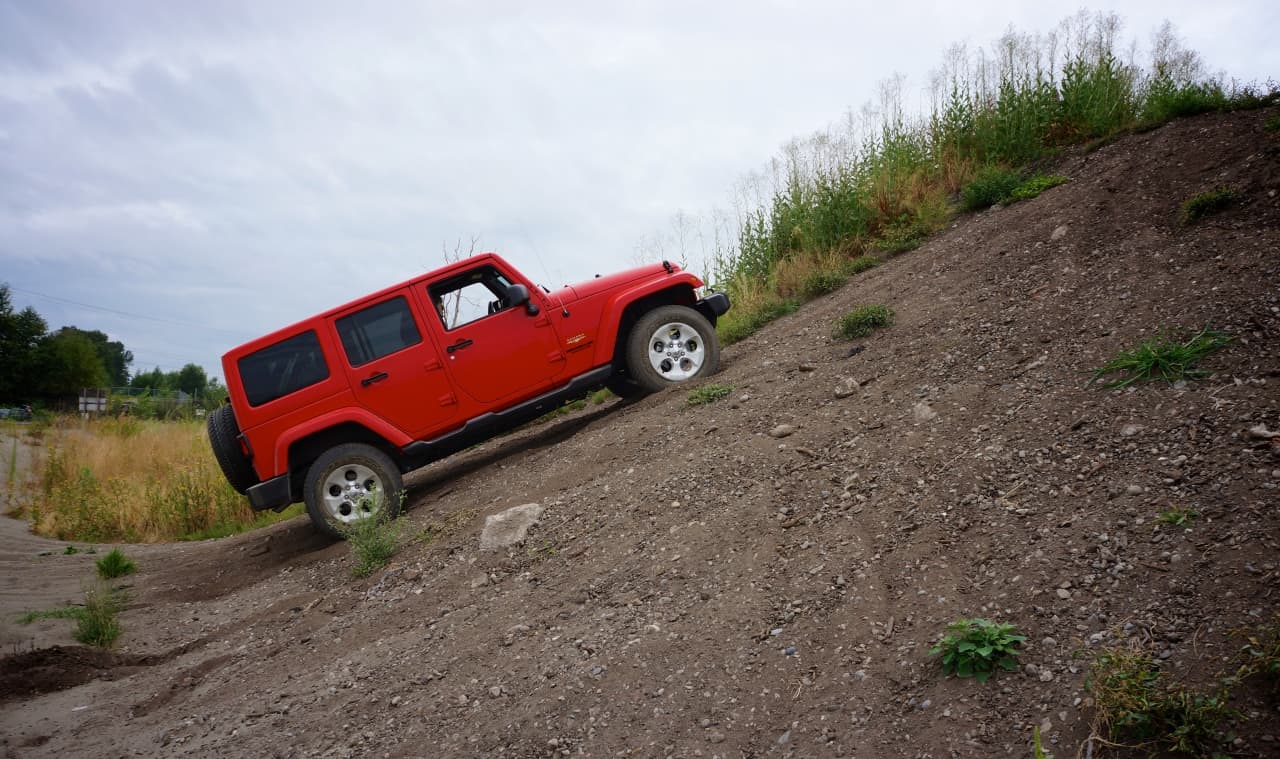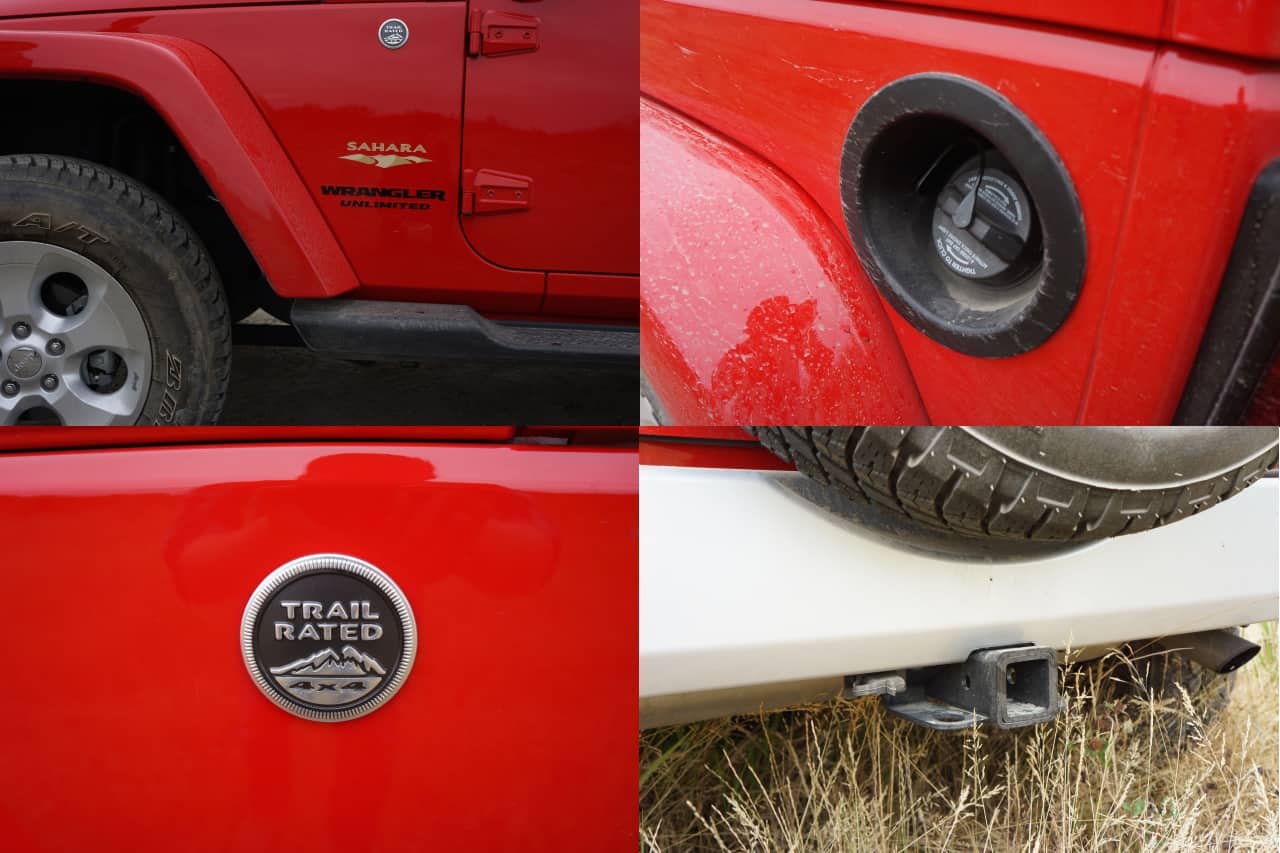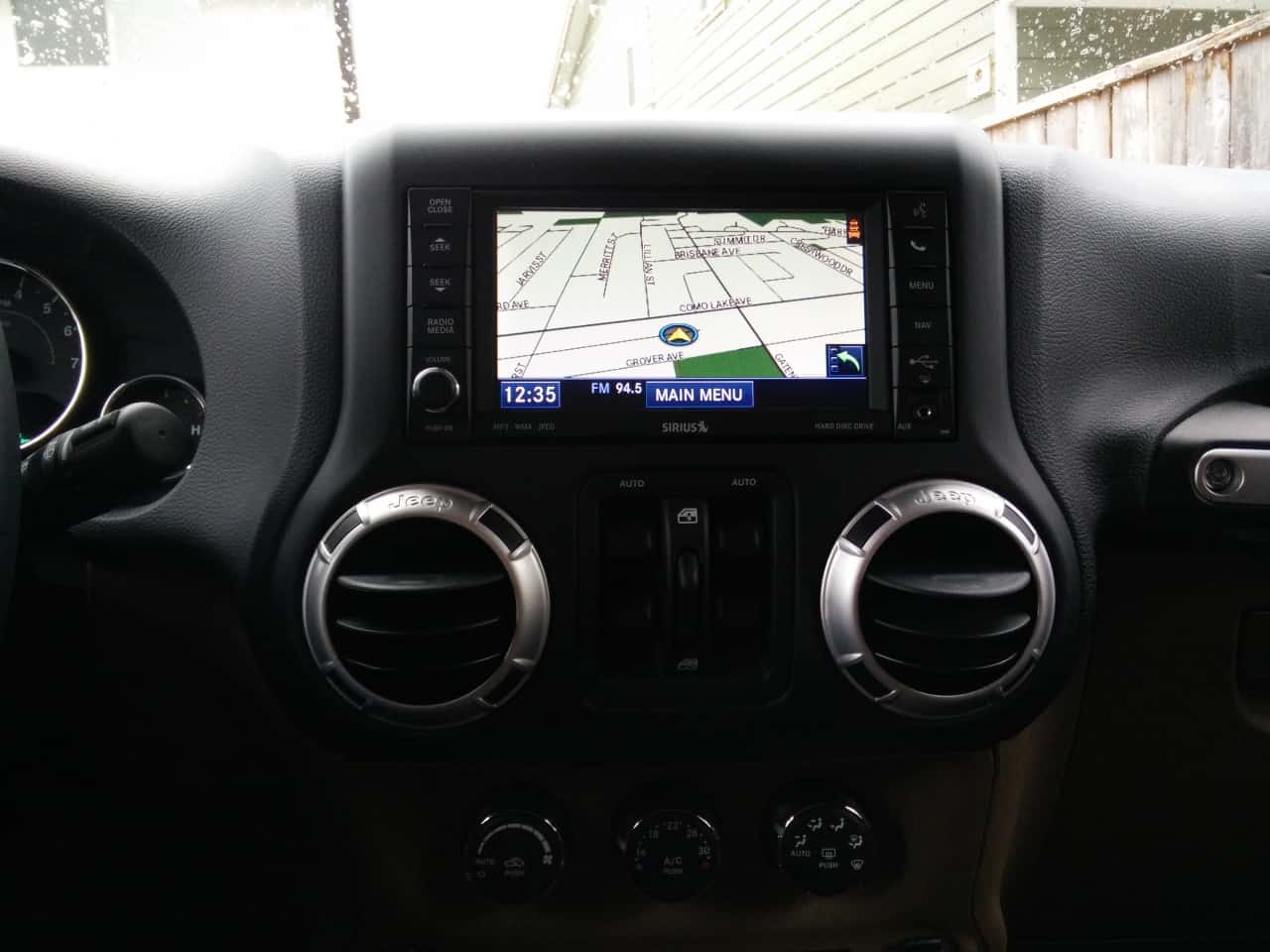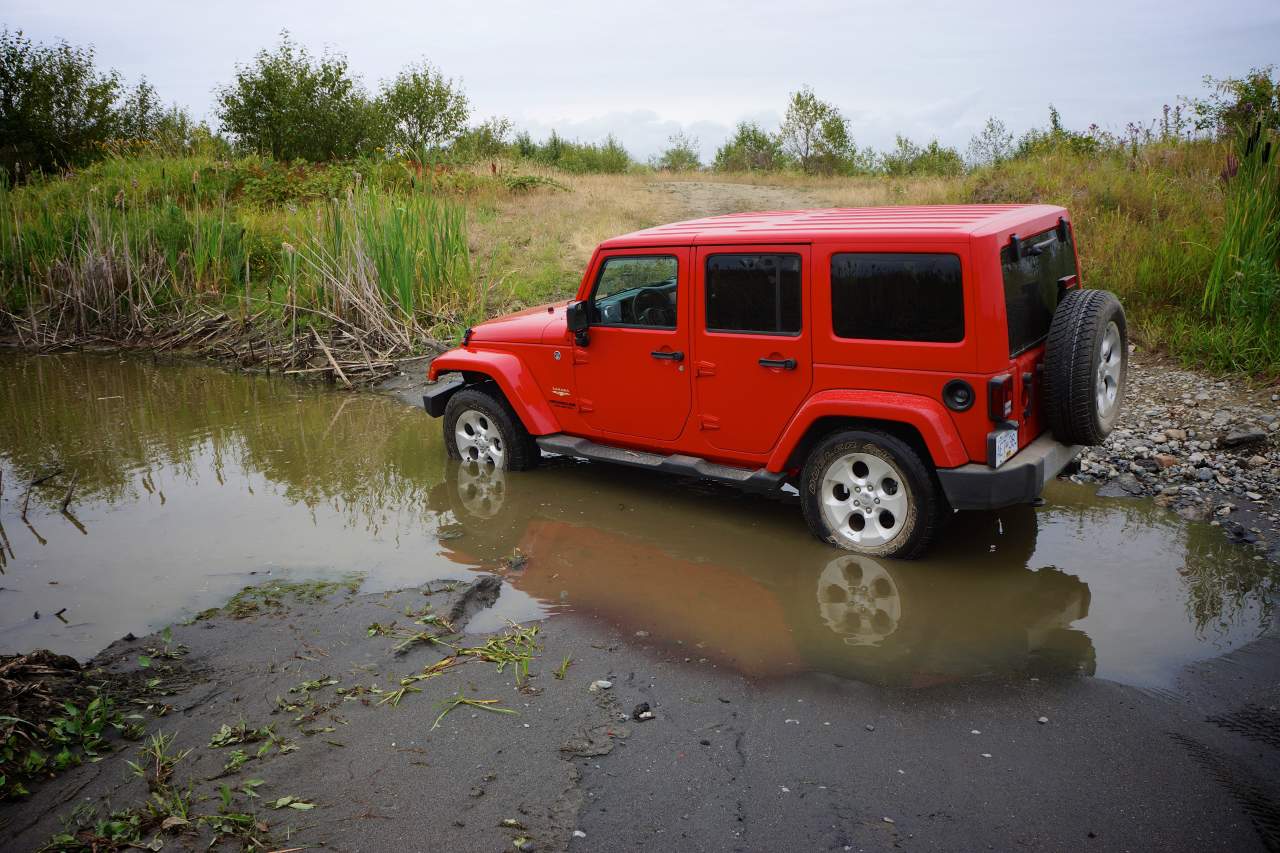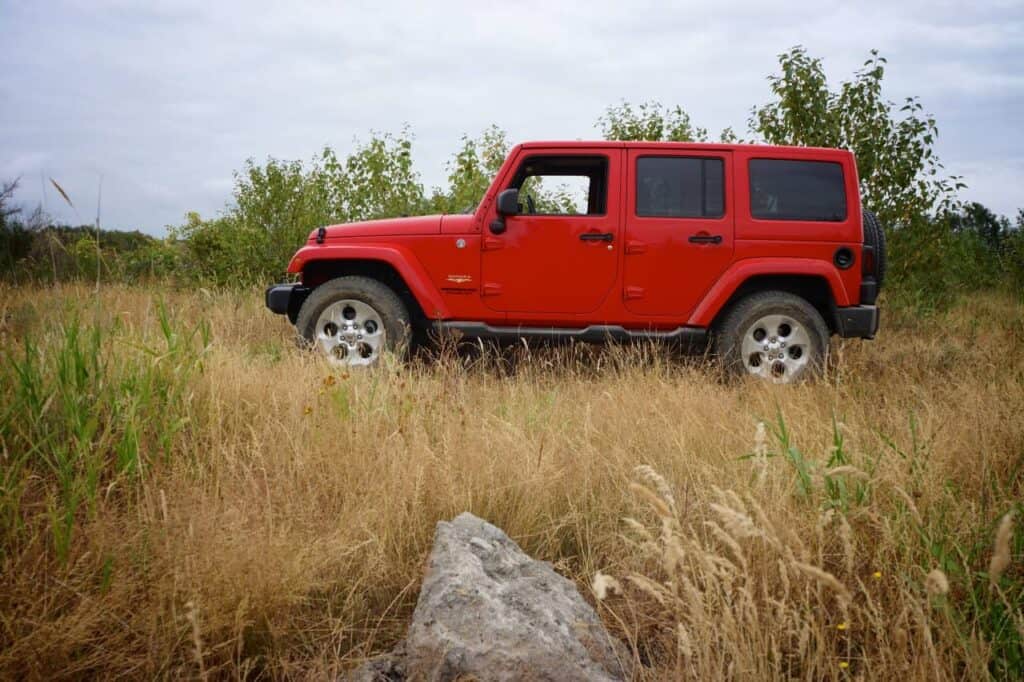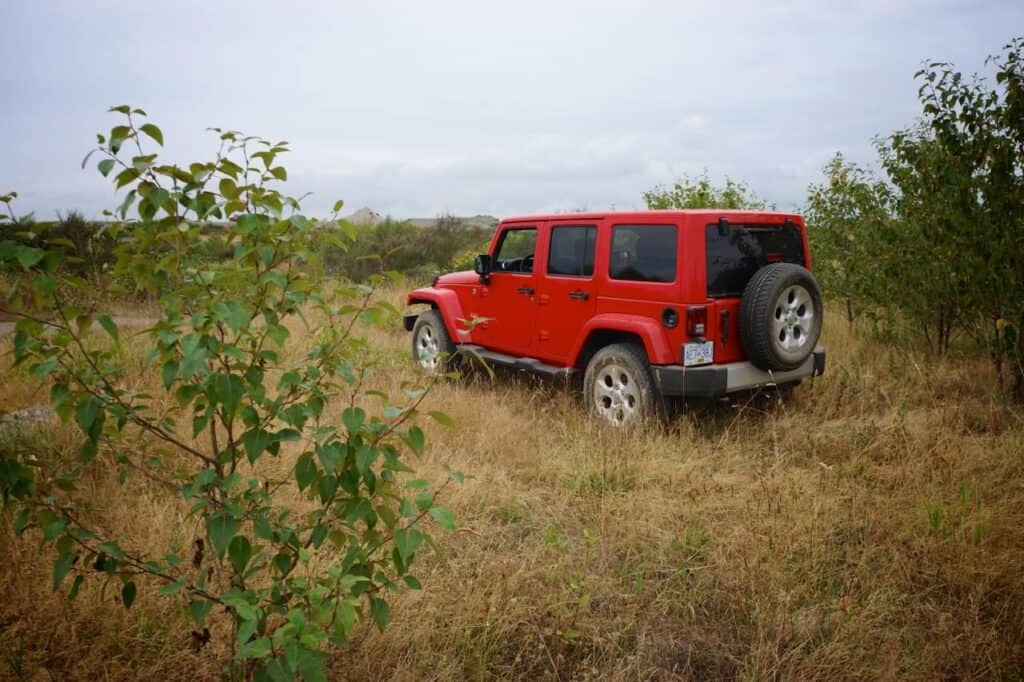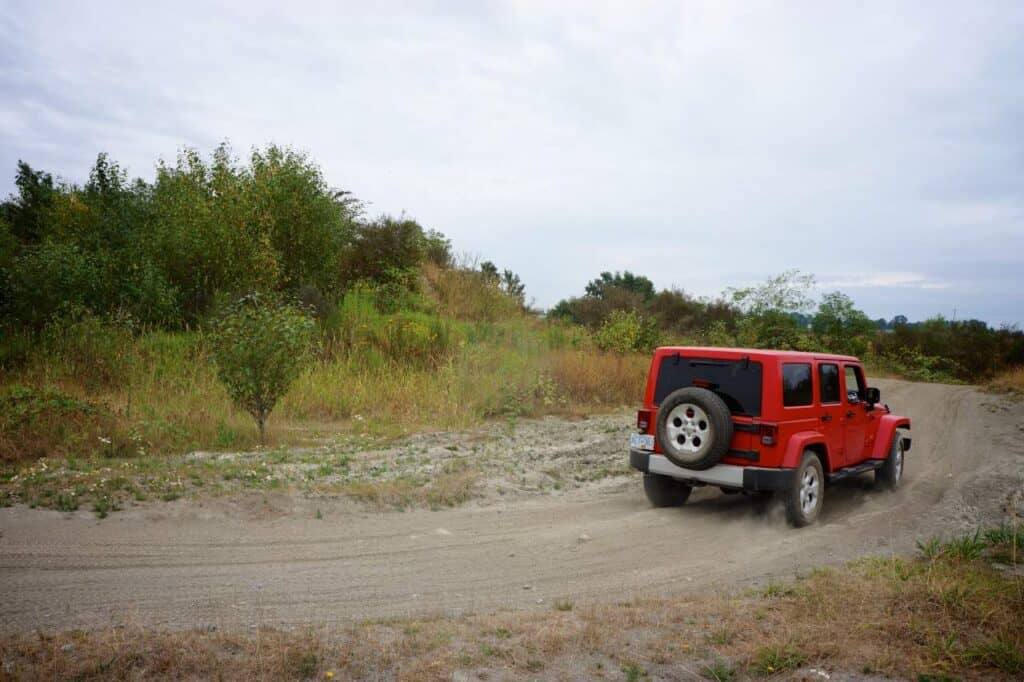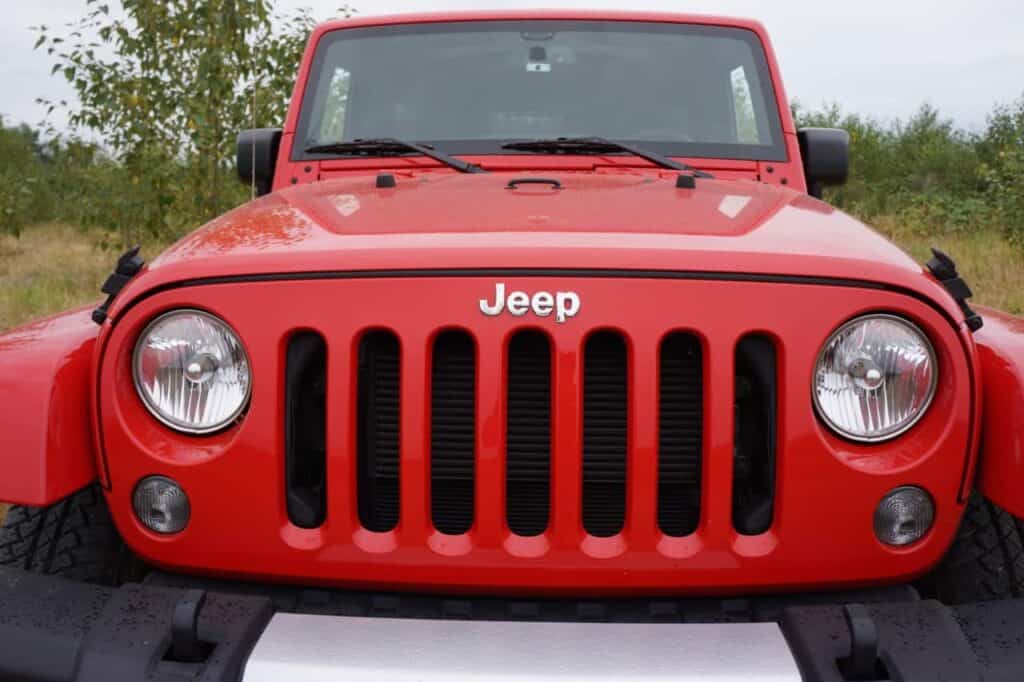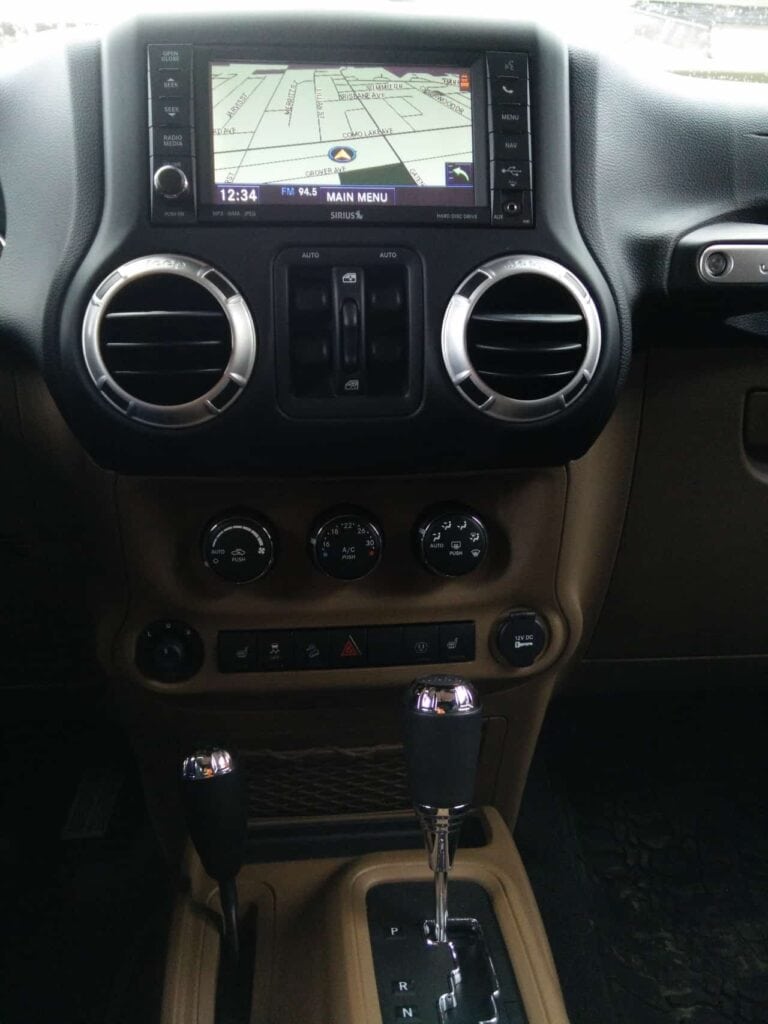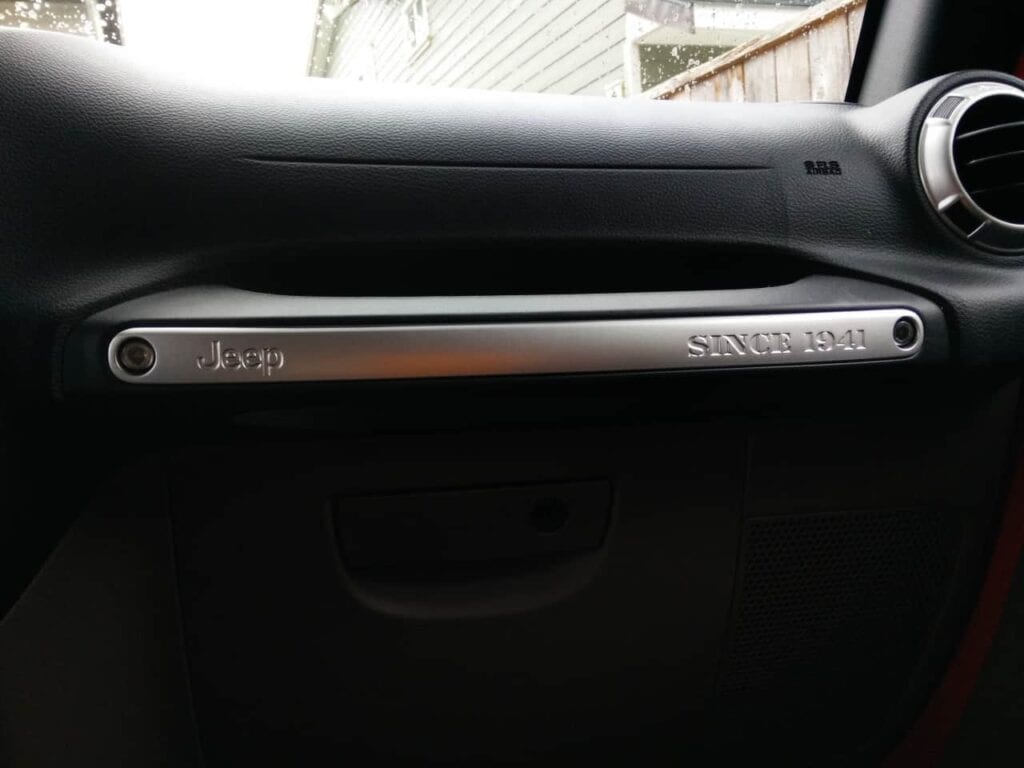There are only a handful of real tough boxy looking off-road vehicles that demand our respect, I’ve personally been a huge fan of these vehicles. They include the Toyota Land Cruiser, Land Rover Defender, Mercedes-Benz G-Class, and the Jeep Wrangler.
The Land Cruiser has turned into a Lexus, which is a luxury SUV and I doubt any of the new models ever see a dirt road, let alone real off-road obstacles; I’m sure it’s still very capable though. The Defender is no more, at least in its current utilitarian format; this leaves us with the G-Class and the Wrangler. The G-Class is very expensive and not for the average consumer, which leaves us with the Jeep Wrangler. It’s still affordable, tough, and keeps the same basic formula of no non-sense off-road machine.
Last week we were handed the keys to a “Firecracker Red” 2015 Jeep Wrangler Unlimited Sahara 4×4 to review. This was my first time ever being behind the wheel of a Jeep and my week-long review was pretty fun and there were a few surprises.
In Canada, the Jeep Wrangler can be had in 7 different formats, starting with the base Wrangler Sport 2-door and ending with the top of the line Wrangler Unlimited Rubicon. Prices start at $21,495 CAD for the 2-door Sport and $38,570 for the 4-door Rubicon and can reach $50k with all the option boxes ticked. Each model comes in 2-door and 4-door formats, except for the base model which is only offered as a 2-door.
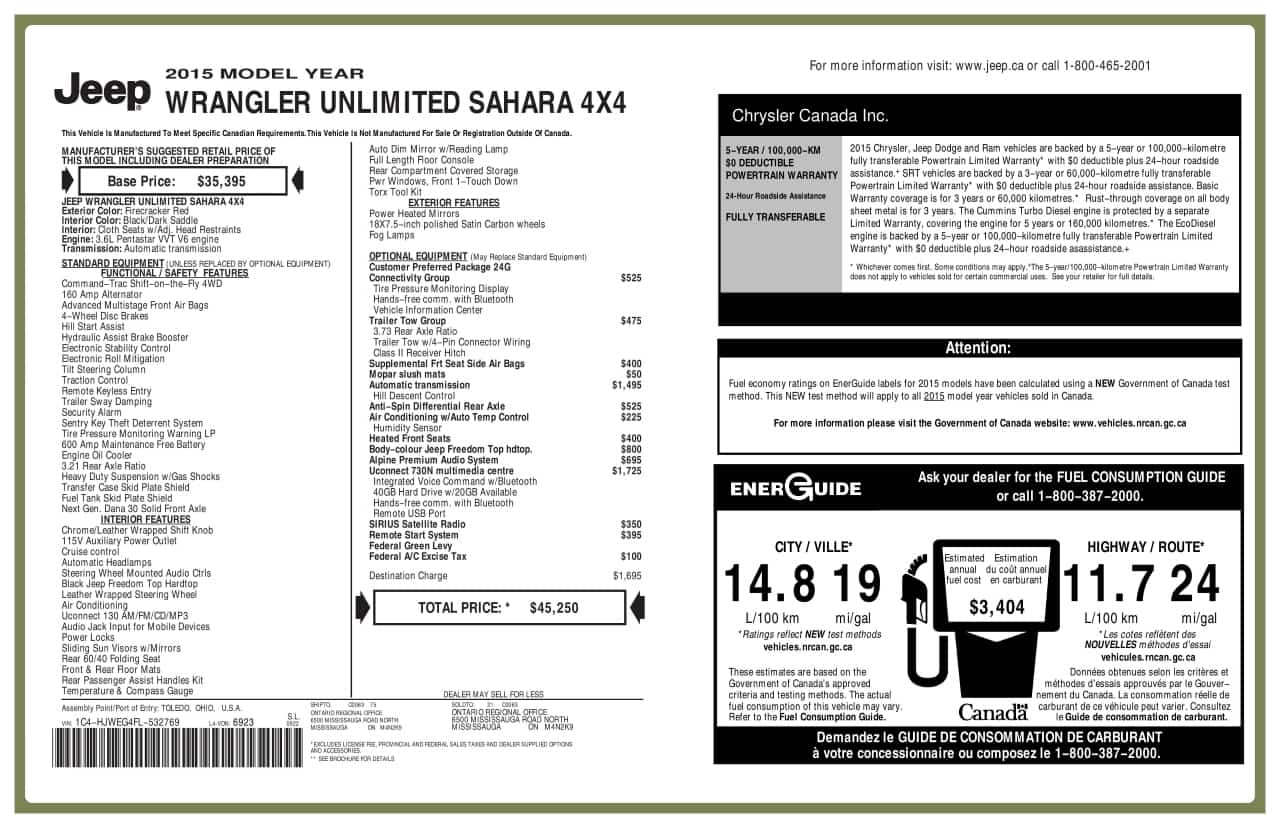 We spent a week reviewing the 2015 Jeep Wrangler Unlimited Sahara. Our test vehicle had a starting price of $35,395, which reached $45,250 with options and destination charges. Some of the options included in our test vehicle were Connectivity Group ($525), automatic transmission ($1,495), body color top ($800), Alpine premium sound system ($695), and Uconnect 730N multimedia centre ($1,725). Click on the image to the right for the full options and price breakdown.
We spent a week reviewing the 2015 Jeep Wrangler Unlimited Sahara. Our test vehicle had a starting price of $35,395, which reached $45,250 with options and destination charges. Some of the options included in our test vehicle were Connectivity Group ($525), automatic transmission ($1,495), body color top ($800), Alpine premium sound system ($695), and Uconnect 730N multimedia centre ($1,725). Click on the image to the right for the full options and price breakdown.
All versions of the Jeep Wrangler are equipped with the Pentastar 3.6 liter V6 engine, producing 285 horsepower and 260 pound-feet of torque, with 6-speed manual transmissions and optional 5-speed automatic transmissions. According to Jeep, the Wrangler consumes 14.8 liters/100 km in the city and 11.7 L/100 km on the highway, we averaged 13.7 L/100 km (according to the onboard computer) in mixed city/highway (50/50) driving with a few hours of slow off-road crawling and climbing hills.
The V6 has plenty of power for normal daily driving, it performs quite well in city driving and highway driving is a breeze with plenty of passing power. For off-road use, the engine provides you with lots of low-end torque to get you up and over many scary looking obstacles.
A high percentage of Jeep Wranglers owners take their vehicles off-road but a lot of people also buy the Jeep just because it’s pretty cool looking and can be taken off-road if they ever feel like it. If I were to own the Jeep, I’d mostly be driving it in the city with the occasional off-road excursion (maybe once a month?). So for this review, we spent most of the week driving around the city and one day of playing in the dirt.
Like I mentioned earlier, I’ve never driven a Jeep Wrangler before and wasn’t too sure of what to expect. I did get a ride in an older 2-door Wrangler, which had quite the rough ride on the road. So I did expect the Wrangler’s ride to be rough and bouncy on city streets, but I was pleasantly surprised at how civilized the Wrangler was on the streets. I was expecting it to bounce around, like a lot of the body-on-frame SUV’s and trucks, but the Wrangler did none of that. The ride was very comfortable and I can see myself driving this on a daily basis without getting fatigued by the bumpy ride. The ride quality is improved by the gas shocks and the longer wheelbase of the Unlimited, compared to the 2-door Wrangler I got a ride in a long time ago.
Another surprise was the amount of noise, or the lack there of, inside the cabin. Don’t get me wrong, this is not a luxury vehicle, but the interior was very quiet especially considering this vehicle came with a removable top. There is some engine noise making its way into the cabin and there is wind noise around the top of the windshield at highway speeds, but the amount of noise was more than acceptable. Again, the new Jeep Wrangler left me quite impressed.
The interior is all hard plastic, which is what I was expecting. Since the doors and roof come off, and the interior gets dirty on these vehicles, having hard plastics makes it quite easy to clean. The interior has a simple layout with a 6.5” touchscreen at the center of the dashboard, this touchscreen has controls/displays for the navigation system, sound system, and phone connection. The center stack also house four buttons to roll the windows up and down, some of my friends thought that was a cool place to put the buttons for the windows. Below that are the knobs for the climate control and at the bottom there are small buttons for the traction control, hill descent control, and heated seats.
The cloth seats on the Wrangler are very comfortable and supportive, especially when you’re off-road and sideways at steep angles, the seats will keep you firmly in place. The back seats are pretty comfortable as well, but there is a lack of headroom for 6+ foot passengers because of the thick roll bar. The back door also happens to be on the smaller size, getting in an out of the back seat is a bit awkward.
Our review Jeep Wrangler came with the “Freedom Top”, which is a hard top that can be completely removed. The front part can be removed, giving it a T-Top look, which takes a flip of a few knobs and unscrewing of a pair of screws. The larger part, stretching from the rear passenger cabin all the way to the “trunk” is a two-man job and takes a bit up unscrewing and muscle, unfortunately we weren’t able to remove this part because of a lack of space to store the top. The doors can also be removed, with the unhooking of the electric plugs (for the windows, locks, and mirrors), and unhinging it.
Now we’ll get to the off-road capabilities of the Jeep Wrangler, in the dirt is where the Wrangler loves to play. Not that I’m an expert at off-roading, but I still had quite a bit of fun taking the Wrangler off-road. The heavy duty suspension with gas shocks feels right at home on rocky roads, it soaks up the bumps with easy but does get bouncy on rutted roads, which is expected.
Climbing up steep hills is quite fun, with the Wrangler’s high ground clearance and low approach angles, the Wrangler climbs steep hills with ease. Even in two-wheel drive, I was climbing some decent sized hills but if you want to climb higher stuff or go in the sand, you’ll need to put it into 4×4 mode. Putting the Wrangler in 4H is pretty simple, just slide the smaller lever into 4H and off you go. For more rough terrain that require slow speed, you’ll need to go into 4 Low, putting it into 4L is a bit different. You’ll need to put the transmission into Neutral, then slide the smaller lever into N and then 4L, turning the Wrangler into a rock crawling machine. Getting it out of 4L is a bit tricky, we had to look it up because we didn’t really know how to get it out.
To take the Jeep Wrangler out of 4L, according to the interweb, you’ll need to coast around 5 km/h, put the transmission into Neutral (as you’re coasting), slide the smaller lever from 4L to N, and then move it into 4H and quickly put the transmission back into Drive. You can drive in 4H from here on or slide it back into 2-wheel drive. It seems simple now, but at the time we were confused.
Overall Impressions
I had quite a lot of fun reviewing the 2015 Jeep Wrangler Unlimited Sahara for a week. I was surprised at how well it behaved on the streets, I already knew this was a capable vehicle; it’s a classic looking vehicle and had heads turning (mainly because of its bright red paint). It is definitely something I can see myself driving on a daily basis, only if it had a diesel engine. Will Chrysler bring a diesel for the Wrangler, my guess is as good as yours, but we can dream and hope.
For more information on the Jeep Wrangler, check out jeep.ca.
